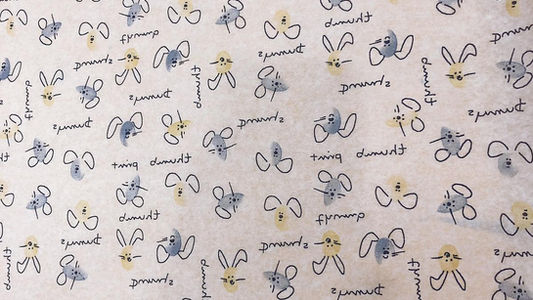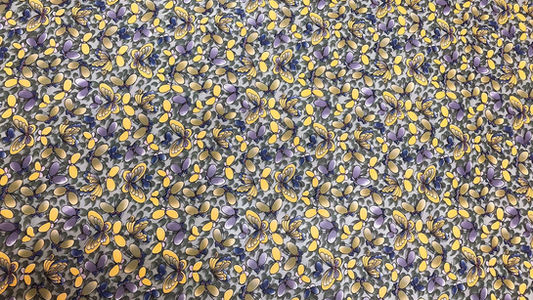Scoliosis
Home / Scoliosis
At Lifeforce, we believe in bracing for scoliosis treatment. We totally understand parent’s concern of taking measurement with the traditional plaster casting. Hence, we introduced 3D scanning for measurement taking for Scoliosis brace. This 3D scanner emits white light which is safe for the eyes while taking the measurement. It is also cleaner, has higher rate of accuracy as compared to plaster casting. Additionally, there is no direct touching of the patient. Only placement of reflective positioning targets are required on the body. The time taken during the appointment is also much shorter as compared to plaster casting.
EVERY BRACE IS UNIQUE TO EVERY SCOLIOSIS PATIENTS.
3D Scanning
Manual Casting


Schedule online. It's easy, fast and secure.
Lifeforce manufactures 3 types of scoliosis brace –
Boston Brace, Aligned Cheneau Brace and Type Rigo-Cheneau Brace
Boston Brace
Scoliosis brace is the most commonly used brace for scoliosis treatment and it adopts the 3 dimension pressure of the spine. The custom made brace will be fabricated after assessment of the patient and X-rays


Boston Brace X-Ray

Before:
Right : T5 – T11 = 28°
Left : T12 – L4 = 26°
After:
Right : T5 – T11 = less than 10°
Left : T12 – L4 = less than 10°

Before:
Right : T6 – T11 = 12°
Left : T11 – L4 = 26°
After:
Left : T11 – L4 = 19°
Aligned Cheneau Brace
Aligned Cheneau brace is an improved version of Boston Brace. It adopts the corrective method to provides individual scoliosis therapy for any aspects of the scoliosis curve. The custom made brace design will be classified, identified and fabricated after assessment of the patient, their X-rays and clinical photos. X-rays and clinical photos are compulsory for this brace.


Aligned Cheneau Brace X-ray

Before:
Right : T1 – T7 = 24°
Left : T7 – L3 = 41°
After:
Right : T1 – T7 = 13°
Left : T7 – L3 = 23°

Before:
Right : T3 – T8 = 13°
Left : T8 – L3 = 21°
After:
Right : T3 – L3 = 9°
Type Rigo-Cheneau Brace
Type Rigo-Cheneau brace is an improved version of Cheneau brace by Dr. Rigo. It is an unique bracing system that provides individual scoliosis therapy for any aspects of the scoliosis curve. The custom made brace design will be classified, identified and fabricated after assessment of the patient, their X-rays and clinical photos. X-rays and clinical photos are compulsory for this brace.


Type Rigo-Cheneau X-ray

Before:
Left : T11 – L4 = 22°
After:
Left : T11 – L4 = 8°

Before:
Right : T6 – T11 = 12°
Left : T11 – L4 = 26°
After:
Right : T11 – L4 = 19°
Design of Scoliosis Brace
To facilitate the receptiveness of the brace, you may choose a design that you like for your brace.
Scoliosis Brace Singapore
What is Scoliosis Management?
Scoliosis management focuses on helping individuals control and alleviate the effects of scoliosis. Doctors and specialists develop personalized plans to straighten the spine, reduce pain, and prevent the curvature from worsening. Scoliosis causes the spine to twist into an S or C shape, which can lead to discomfort and difficulty moving. If untreated, it can disrupt the body’s balance. Various treatments, including exercises, braces, and improved posture, help keep the back strong. In more severe cases, surgery may be necessary to correct the issue.
Using a back brace for scoliosis helps prevent worsening curvature, especially during growth years. At Lifeforce Hub, we offer scoliosis brace in Singapore including customised braces designed for different severity levels.
Approaches to Managing Scoliosis
Non-Surgical Methods
Physical Therapy
Physical therapy helps train the body to stay strong and balanced by guiding patients through stretches and exercises that loosen tight muscles and strengthen weak ones. These movements help stabilize the spine and prevent further bending. Therapy also focuses on teaching proper posture, encouraging people to stand taller and sit straighter. A scoliosis brace for adults is more effective when combined with these exercises, as the muscles adapt and the spine remains properly aligned and firm.
Bracing for Scoliosis
Bracing helps prevent further curvature of the spine by holding it in place. A scoliosis brace in Singapore grips the back tightly and prevents curving. Doctors study X-rays before crafting the perfect brace. The Boston Brace, Cheneau Brace, and Rigo-Cheneau Brace work by applying pressure to guide the spine into a better position. A back brace for scoliosis supports growing bones in children. Scoliosis management like a scoliosis brace for adults provides added strength and comfort during daily activities.
Lifestyle Adjustments
Simple changes can help protect the spine. Sitting for long periods can put pressure on the back, so it's important to change positions regularly. Carrying heavy bags can pull the body off balance, so lifting lighter loads helps protect the spine. Using proper furniture that supports the back ensures the spine stays aligned. A body brace for scoliosis helps improve movement, allowing individuals to stand upright without strain and maintain better posture throughout the day.
Surgical Interventions
When is Surgery Needed?
Doctors may recommend surgery when the spine curves excessively. If scoliosis puts pressure on the lungs, causes significant pain, or affects mobility, surgery becomes necessary to correct the curvature and improve quality of life.
Common Procedures
Doctors use metal rods and screws during scoliosis surgery to straighten the spine. Bone grafts are added to help strengthen the structure. In some cases, children require special growing rods that adjust as they grow. After the surgery, patients often experience improved posture and easier movement. Although the healing process takes time, many patients regain normal mobility and can return to their daily activities.
Types Of Scoliosis And It Causes
There are three main types of scoliosis:
1. Idiopathic Scoliosis
Idiopathic scoliosis is the most common type of scoliosis and is generally diagnosed between 10 to 18 years of age. There are no clear causes of idiopathic scoliosis. But, as they are more common in females, it is assumed that it has to do with postural maturity.
2. Congenital Scoliosis
Congenital Scoliosis is a bone disorder that kids are born with. The causes of congenital scoliosis are unknown but the use of a back brace for scoliosis or body brace for scoliosis can help with scoliosis management. Timely diagnosis can help stop the bone to deform more and, in some cases, it may also reduce the deformity.
3. Neuromuscular Scoliosis
Neuromuscular scoliosis is found in kids with muscular diseases. This includes muscular dystrophy, spina bifida, spinal cord trauma, spinal muscular atrophy, and cerebral palsy. Neuromuscular scoliosis generally progresses more rapidly in comparison with idiopathic scoliosis and needs surgery for cure.
Symptoms of Scoliosis
Below are some common symptoms of scoliosis and if you notice more than one of these symptoms, it’s better to consult a doctor.
-
Uneven shoulders. One or both of your shoulders may stick out.
-
Your head is not directly above the pelvis.??
-
Your hips are not balanced. One might be abnormally above the other or both me be above the normal position.
-
Uneven position of rib cages.
-
Your waist is uneven.
-
You notice dimples, hairy patches, color abnormalities over the skin across the spine.
-
The body is not straight and bends to one side.
-
Back pain
Practical Tips for Daily Scoliosis Management
Stretching Routines and Exercises
Stretching loosens stiff muscles and makes movement smoother. Exercises like pelvic tilts, cat-cow stretches, and side bends boost flexibility and power. These moves train the back to stay strong and upright. A body brace for scoliosis guides the spine while the muscles adjust and strengthen.
Managing Pain with Ergonomics and Proper Posture
Improving posture helps prevent pain. Sitting up straight keeps the spine aligned and healthy. It’s important to keep feet flat on the ground and choose a chair that provides good support. A firm mattress also helps cradle the back while sleeping, promoting better spinal alignment and comfort throughout the night. A scoliosis brace for adults eases discomfort at work or home.
Mental Health Support and Staying Motivated
Scoliosis can be challenging, but having support makes it easier to manage. Connecting with others who understand can provide comfort. Practicing deep breathing and relaxation techniques helps keep the mind calm and focused. Maintaining a consistent routine keeps the body stable and can help reduce discomfort over time.
How Scoliosis Is Diagnosed?
A scoliosis brace for adults may not cure the condition but a well-designed adult brace along with a compliant patient can help to reduce the curve.
Initially, the doctor will take the medical history and perform a physical exam to check any abnormality in the posture. You may also be required to take an assessment to diagnose any muscle weakness or abnormal reflexes.
After that, if the need arises, the doctor may ask you to go for an X-ray to confirm the diagnosis and check the severity of the spinal curvature. The curve is measured through the COBB method and the severity is diagnosed through the Cobb angles.
Treatment for Scoliosis
The eventual treatment of scoliosis is surgery. However, surgery is not possible until the child has grown up. So, in order to reduce the curve or to stop the curve from increasing scoliosis brace Singapore is used. A back brace for scoliosis and a body brace for scoliosis is the most commonly used braces for scoliosis management in children.
Scoliosis braces are not just limited to adolescents, scoliosis brace for adults is also used.
-
Can compression garments help with post-surgical recovery?Yes, by reducing swelling, enhancing blood circulation, and promoting the healing process, compression garments can help with post-surgical rehabilitation. They support tissue recovery while offering support and comfort.
-
How should I care for and clean my compression garments?Wash your compression stockings in the washing machine at a temperature of 30 or 40 degrees, either alone or with clothing of the same colour in a washing net. Please use a mild wash cycle while washing them. Use a simple colour detergent without brighteners. Utilize no fabric softeners.
-
Are there any potential side effects or risks associated with wearing compression garments?Yes, wearing compression socks or stockings may potentially worsen skin conditions, irritate the skin for individuals with highly sensitive skin, and impair blood circulation if the compression garments are ill-fitted.
-
What are compression garments, and how do they work?Compression garment is a tight-fitting clothing made to put pressure on a specific part of the body. An arm compression sleeve for lymphedema and compression stocking for varicose veins are prime examples of compression garments. They promote circulation, minimize swelling, and aid muscle rehabilitation by increasing blood flow and reducing fluid buildup.
-
What types of compression garments are available?There are many types of compression garments available like compression stocking for spider veins, binders, compression face and neck masks, compression bras, bodysuits, leggings, compression shorts, compression girdles, undergarments, compression sleeves, wraps and vests, arm compression sleeves for lymphedema, compression stocking for varicose veins.
-
Can compression garments be worn overnight?No, if you don't have a muscular problem, oedema, or a venous disorder, you don't need to wear compression while you sleep unless otherwise instructed by your doctor or physician.
-
How long do compression garments typically last?Your compression socks should last between three and six months, depending on the medical conditions you use them to treat.







